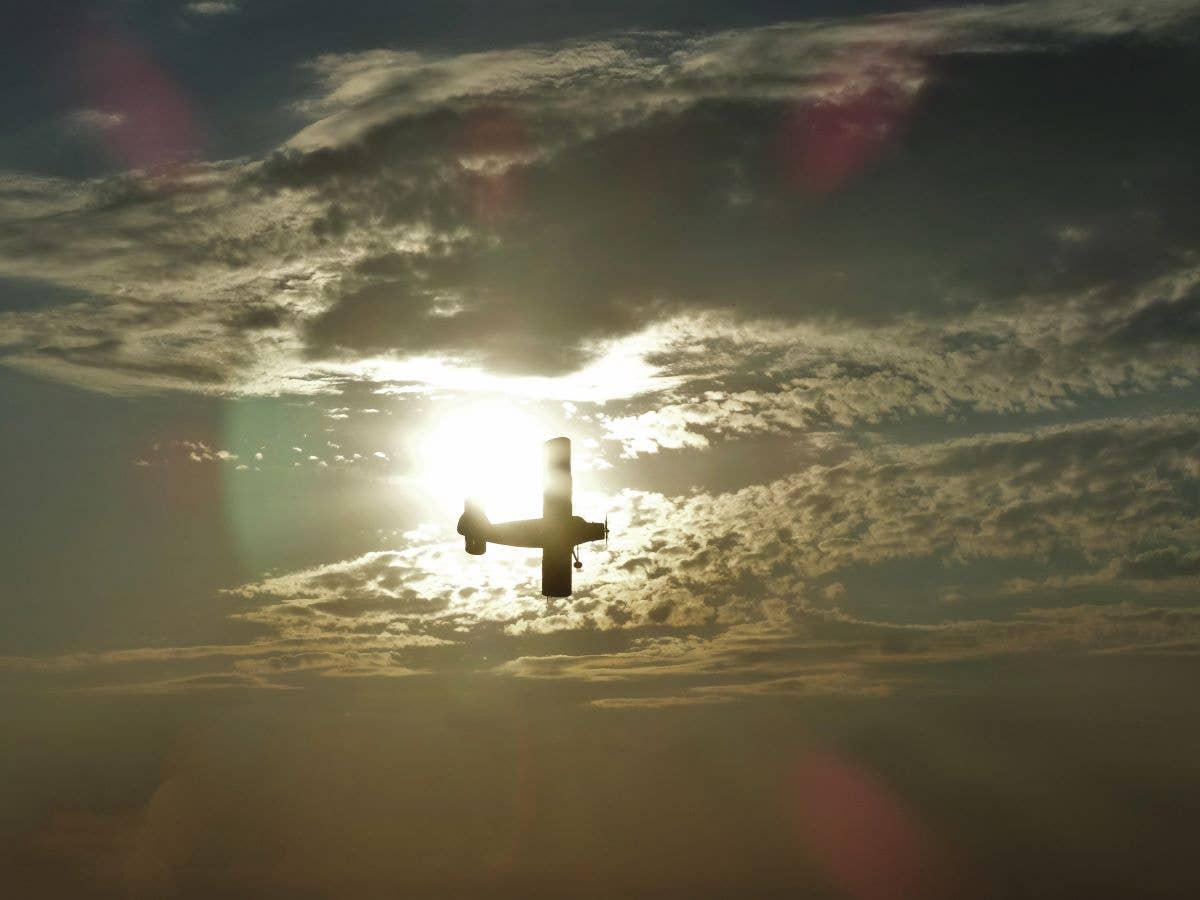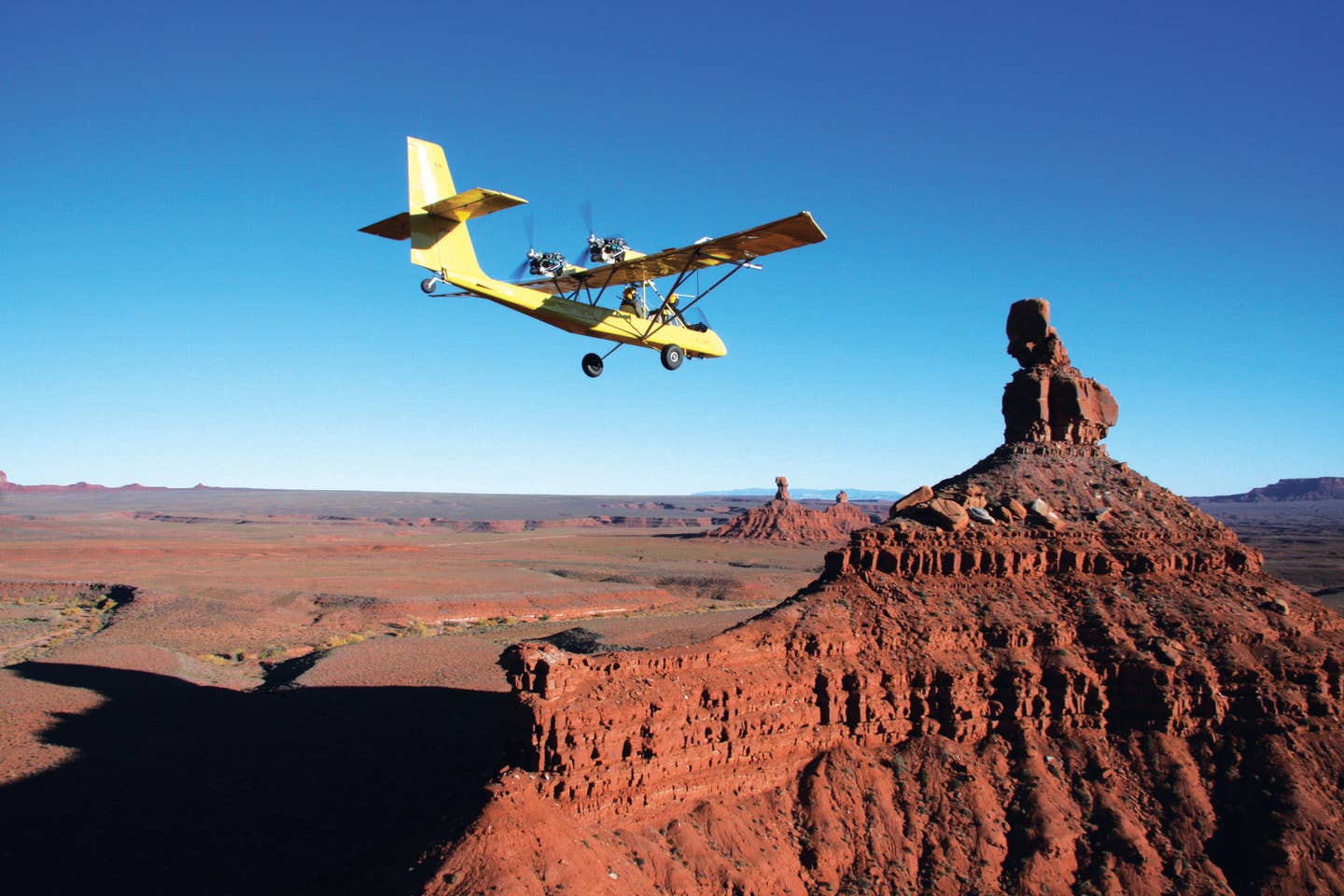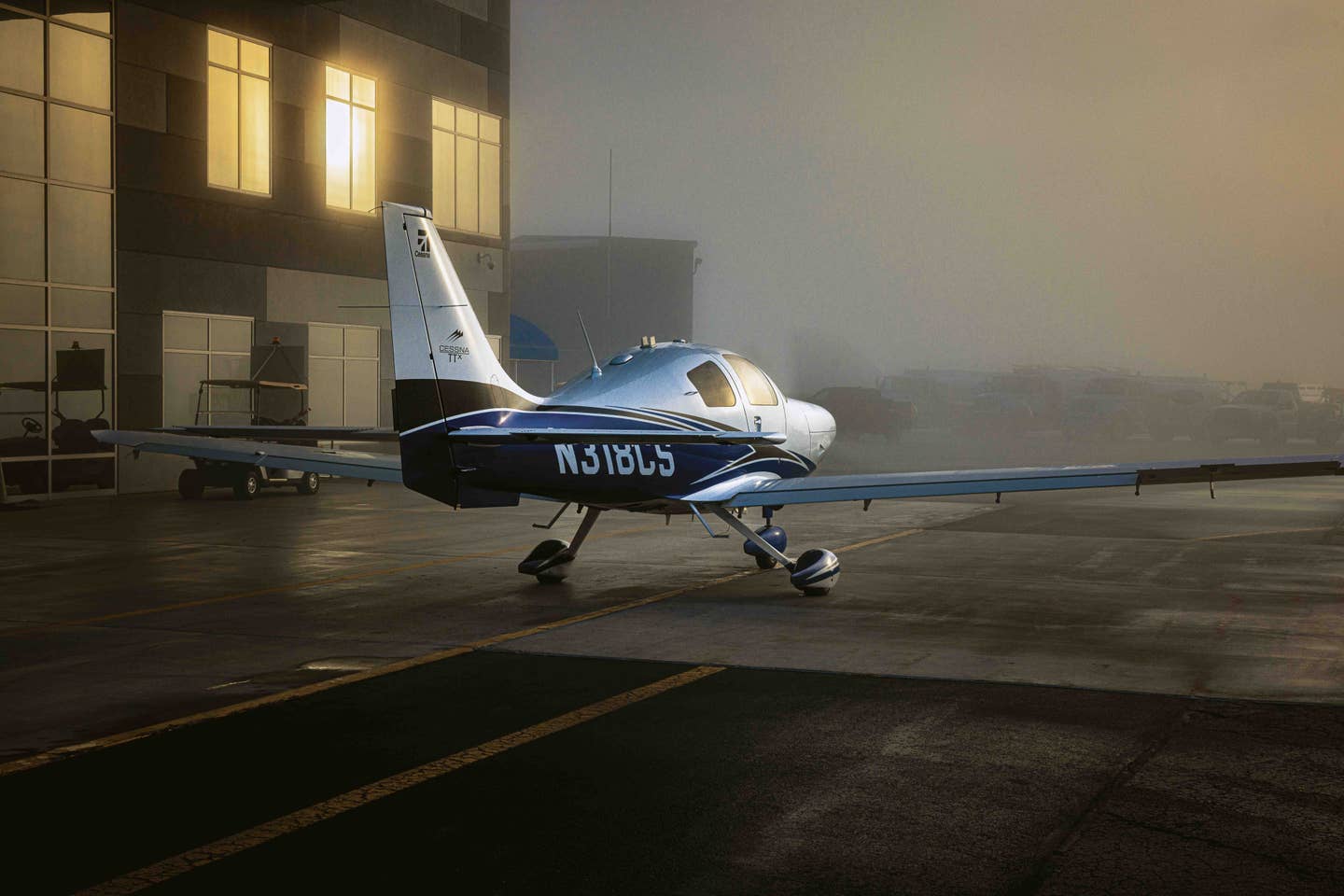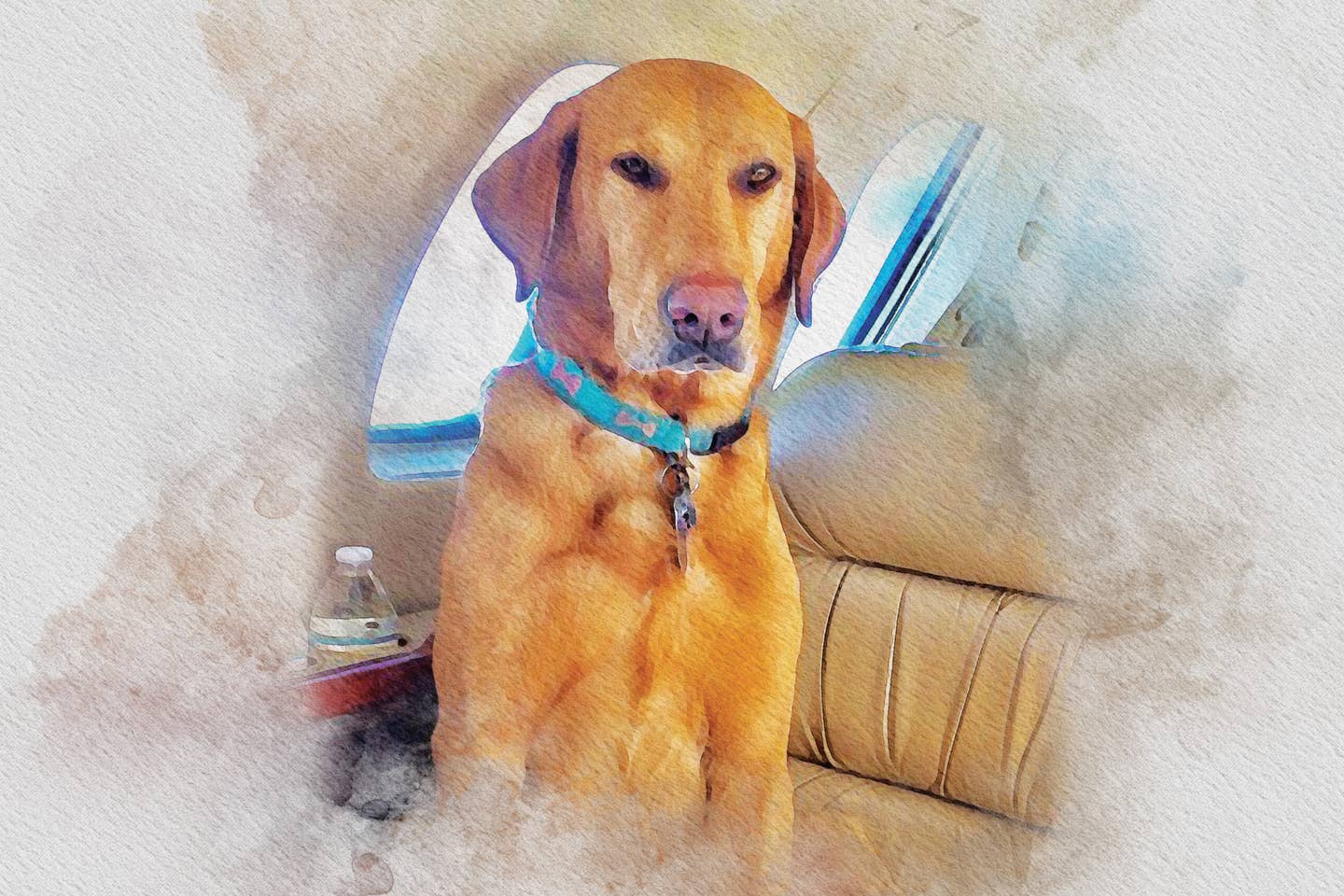Warbirds You Can Fly: Beech 18
A classic wartime twin turns into an executive transport—and a challenge for pilots.
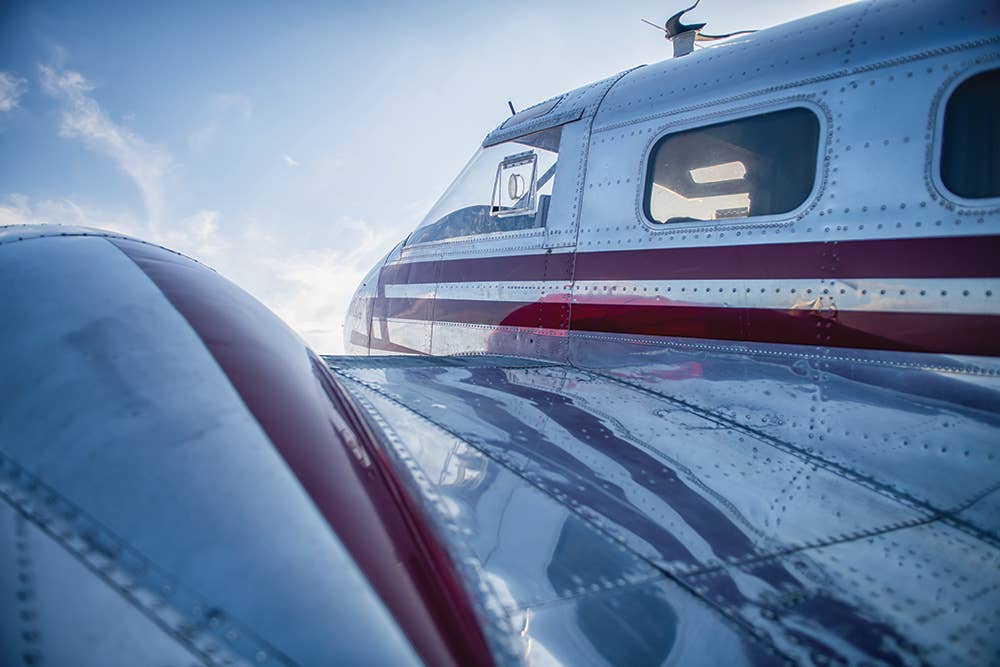
[Photo: Glenn Watson]
Do you look at a Beech 18 and see the heritage in its lines? The model has become so iconic to the modern pilot’s eyes that we tend to look at its silhouette in the sky, and see a reference only to that classic twin.
But those radials thrusting skyward have an inheritance from the design that came before it—the Beech Model 17, known to most as the Staggerwing—in those very engines, and much of the technology used initially to turn the company’s flagship single into a multiengine work of art.
Model Development
More than half the those originally sold to new owners in the 1940s went to pilots who already knew the Beech 17, according to Robert K. Parmerter, author of the comprehensive Beech 18: A Civil & Military His-tory. “Could this new twin-engine monoplane build on the growing reputation of the Beech Aircraft Company and pass on to a successor model the same legacy that it had received?” asked Parmerter in those pages.
It filled a gap left between the 3- to 5-passenger singles and larger multiengine aircraft such as the Douglas DC-2, which carried up to 14 passengers. The Bureau of Air Commerce (the precursor to the Federal Aviation Administration) challenged the industry to craft bids for a “small transport plane” with two engines, to be used by its own line inspectors. “Ted Wells, chief designer and vice president at Beech Aircraft Company in 1935, recalled 53 years later that the announcement of the Bureau competition was the impetus for Beech, and it instigated design work on a Beechcraft twin,” Parmerter wrote.
And was that model—fashioned to carry 6 to 11 passengers in that sweet spot—a success compared to its predecessor? More than 9,000 were built, with around 4,500 put to the war effort in World War II. Beech only built 745 of the various Staggerwing models, in comparison, making it clear that the twin came out on top.
The Care and Feeding of a Warbird
While Beech converted N611WP into the C-45H Expeditor model with an executive interior and configuration it now carries, Scarlette is still a warbird at heart. During the period from 1951 to 1952, the U.S. Air Force contracted with Beech to convert 900 of the C-45models, rebuilt from original RC-45s, C-45Bs, C-45Fs,T-7s, and T-11s. They exited the factory this second time as C-45G and C-45H models.
N611WP began life as a U.S. Air Force T-7C, construction number 6060, and in 1954 transformed intoAF-875, a C-45H. The FAA issued its new certificate of airworthiness on March 22, 1961, under its prior registration number: N9478Z. As N611W it flew for the Farm Service in Brawley, California, through 1965, when it was picked up by Pacific Airmotive in Palm Springs.
A midair collision while on approach at Van Nuys (KVNY) with a Piper PA-28 on July 15, 1967, only resulted in minor damage, thankfully, and it returned to service with a succession of California operators through the 1970s.
In October 1991, Jim McBurney, of Tyler Aircraft Company, in Tyler, Texas, purchased the airplane—now N611WP—and he showed it off several times at the annual Beech Party Fly-In in Tullahoma, Tennessee. McBurney sold the airplane to Malcolm Thurmond, of Georgetown, Texas, in May 2000, and 21 years later, Jerry Gregoire took over the care and feeding of this classic, basing her at San Marcos, Texas (KHYI).
As any modern owner of a vintage airplane can at-test, the purchase only begins the journey—both from a learning standpoint as well as a financial one. As the years pass between the time when a given airplane rolled out of the factory with all of its spare parts and manuals intact, those tools and instructions evolve, fade, and often disappear, leaving a certain amount of creativity necessary to keep an old girl flying.
You need a good relationship with oil, for example. Whether you put on gloves or not, the 450 hp Pratt & Whitney R-985-AN-14B engines circulate the dead dinosaur juice even when they’re not running. And that’s why my rendezvous with Scarlette began up on her wings, taking the oil scavenged from the drip bottles and filtering it back into the sumps on each engine.
A Pilot's Challenge
The aircraft that demand the most from you as a pilot offer the highest rewards—so says Roger Sharp, who would shepherd me through my first hours taxiing and taking to the air in Scarlette.
He approached our briefing with a stack of notes to ensure he covered the first round of precious knowledge borne from experience. Much of our first preflight briefing centered around the differences be-tween controlling the Beech 18 on the ground versusmost every other airplane I’d ever flown.
The model has a non-steerable tailwheel, and an empennage that sits outside of the propeller slipstream when the airplane is on the ground. “The rudder is mechanically blocked by the wing in its three-point attitude,” according to Sharp’s notes from that briefing.
"On takeoff—raise the tail early. On landing, keep the tail up.” The idea is to keep the tail and rudder elevated into the relative wind as long as possible.
With counter-rotating props, there is real torque and P-factor at play, equating to a significant amount of left-turning tendency on the ground when the power comes up.
Mastering the Taxi
Control on the ground during taxi—and when the tail is still planted during takeoff and landing—only happens by using differential throttle and braking, in that order of preference. Sharp calls it “wrist control,” and I would soon learn what that special twist of the right wrist would feel like as I made my first exit from the chocks on the thankfully wide ramp at San Marcos Airport.
“The rudder doesn’t do anything,” Sharp says. “Sotry and not push the pedal before braking. Good luck with that.” Turns out, most pilots who have flown anything else more than the Beech 18 cannot help but push on the rudder pedal while applying the brake on one side when taxiing. The powerful muscle memory sticks, even as you think to yourself, “Don’t push the pedal.” Everyone does it, yours truly included.
Taxiing along goes well at first—I recall back to the only other airplane I’ve flown that has a similarmeans of ground control, the Douglas DC-3—as I get the “wrist twist” and tapping on each pedal as needed,to keep us in line and make our way slowly out to the runway. The cool white endcaps on the throttle leversfit neatly into my hand, turning that twist into second nature in short order.
For the runup, we lock the tailwheel; and because the amount of power in the Wasp Juniors will over-come the parking brake, we throttle up each engine separately, running through the prop control, and checking feather and the mags.
Ready for Takeoff
We’ve briefed the takeoff, and I ask Sharp to demo the first one so I can concentrate on watching the progression. This is a technique learned from other good instructors—a student new to any aircraft benefits from just watching. Released from the worry of “doing it right,” you register more of what’s going on, and you can look where you want—not just down the runway—in the case of the takeoff.
With the tailwheel locked—and we won’t touch it until we’re ready to turn off onto the taxiway after landing—the power comes up and the yoke is almost full forward. We want that tail in the air as soon as possible to gain rudder effectiveness. Differential throttle keeps us aligned with a minimum of brake tapping. Clearly, those brakes extend the takeoff run if applied.
Any crosswind correction calls for special attention because of this—it takes full aileron into the wind with any significant amount of crosswind because of the large tail surface. Throttles come up deliberately to 35 inches of manifold pressure. They’re not governed, so jamming the power forward is a big no-no.“You lead with the left throttle,” Sharp says. “If it veers left and you push the right rudder, it won’t help, so it’s setting you up for an issue.” When the tail comes up—early as planned—you also don’t want the right rudder already in when it becomes effective.
The tail comes up around 30 knots indicated, and on that first run, we lift off after about 2,000 feet of runway just above the VMC speed of 85 knots. Gear comes up, and the barber poles of the landing gear indicators disappear. We’re clean and flying off to the practice area near Lockhart (50R), about 10 nm to the east.
Once airborne, Scarlette handles very sweetly, with a minimum of adverse yaw, and a relative nimbleness given her size, weight, and age. I play around with steep turns, lazy eights, and slow flight before bringing the airplane back into a stall, which with power off re-mains docile.
Back in the traffic pattern, the Beech 18 can be hard to slow down, so you want to plan for that and make a relatively wide downwind and base. Sharp uses 120mph indicated for gear and flaps—“it’s something a bit higher, but 120 works well”—and we want to keep at least 15 inches of manifold pressure in.
Flaps don’t come with detentes, so you count 3 seconds approximately to actuate them in 15-degree increments.
Making the Landing
The first landing Sharp also demonstrates. To keep that rudder effective as long as possible, we make a wheel landing as a matter of practice. You can have the tailwheel come down at 60 mph or at 30 mph, and most pilots would prefer to be going a little more slowly when the inevitable swerve occurs as the small wheel in the back touches the pavement.
Off the runway, Sharp gives me the airplane to taxi back for my own takeoff and landing. I forget to come up on the brakes, and take a little more of an excursion than I did in my first attempt at taxiing. Lesson learned. Sharp remains calm; I think every transitioning Beech 18 pilot has trimmed the grass a bit in mastering the girl’s somewhat contentious ground handling. But I get my act back together enough to return to the approach end of Runway 13.
Time for my takeoff. I am up on the brakes a bit to start after locking the tailwheel and adding power slowly and smoothly. With the yoke forward, I can feel the relative wind build and engage the elevator, and the tail comes up as predicted. I have about half the aileron deflection in to counteract about 5 knots of crosswind component, and the deflection is removed as the tail rises.
Without too much fuss we’re back in the air and making a stately trip around the pattern. I throttle back to keep us within gear and flap speed, and psychologically prepare myself for the milestone ahead. Fortunately for us all, the wind stays light and mostly down the runway, which is thankfully 100 feet wide and also prepared for my first landing in the Beech 18. The approach profile is best made relatively flat, with about a 3-degree descent profile, with a level pitch attitude. The goal is to touch down with minimum sink in that same attitude, with the yoke forward, and let the tail stop flying on its own. “Don’t chop the throttle, fly it on,” Sharp says.
He’s cautioned me that, owing to a shutoff valve within the hydraulic system between the brake actuators on the rudder pedals, whichever pilot applies the brakes first “wins.” “I can’t fix it,” he says. If I apply the brakes, he can’t override my actions. A sobering thought as I approach that first landing.
When the tires squeak on the pavement, and I play a bit with the yoke forward to feel that weight staying on it till at last it sighs and falls gently to the pavement. I’m ready for the swerve, which is minor, and I keep it together until we are slowed down enough to make the crossing runway and leave the active.
Maybe it was beginner’s luck, but I’ll never forget that sweet moment.
Sharp likes the airplane because it demands that you pay attention and fly it continuously from start up to shut down. I now understand why the Beech 18 has the reputation it does, as a “tricky” airplane, but one that still compels pilots to want to master it.I
t’s an entirely worthwhile pursuit.
Beech 18/C-45H Expeditor
| Price range | $75,000 to $120,00 |
| Powerplant | Pratt & Whitney R-985-AN-14B Wasp Junior @ 450 hp |
| Max cruise speed | 220 mph |
| Max range | 1,652 nm |
| Max useful load | 540 pounds |
| Take off distance | 1,760 ft |
| Landing distance | 1,460 ft |
| Insurance cost | 21,400 ft |
| Max operating altitude | Low |
| Length | 35 ft. 2 in. |
| Wing span | 49 ft. 8 in. |
| Height | 9 ft., 4 in. |
| Empty weight | 5,844 lbs. |
| Max takeoff weight | 9,900 lbs. |

Subscribe to Our Newsletter
Get the latest FLYING stories delivered directly to your inbox

